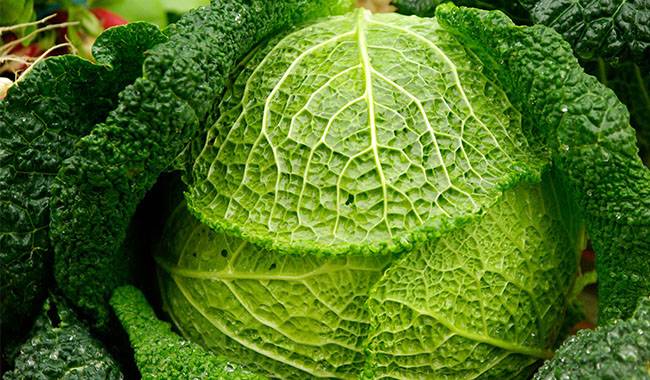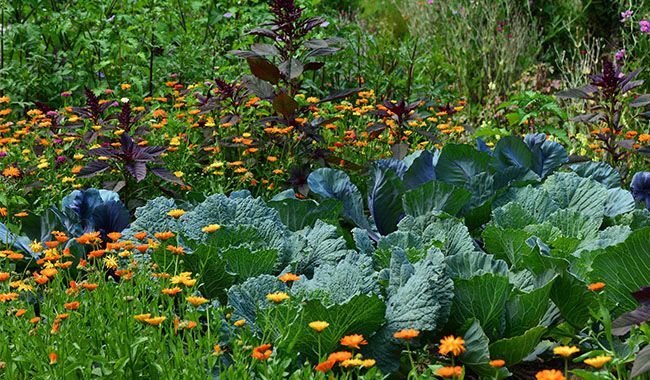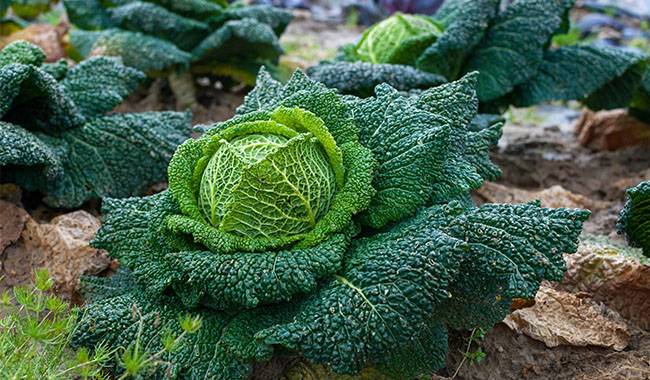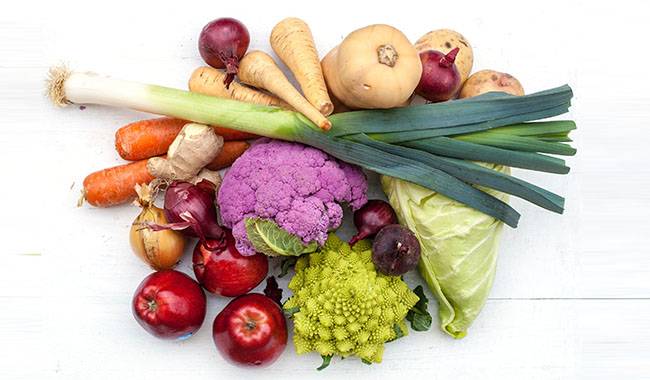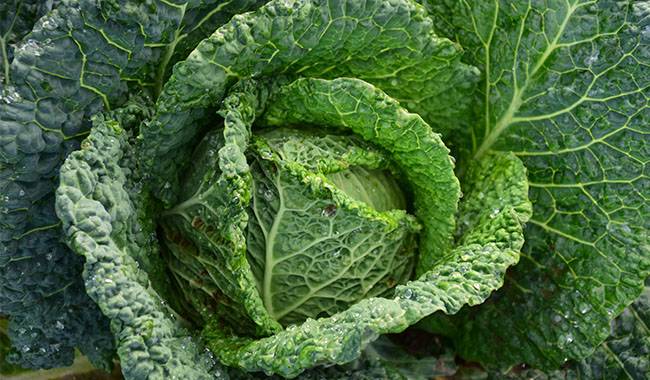
As you know, cabbage, whether cabbage or red cabbage, is a vegetable that should put into storage in the fall and then used for most of the cold winter season. But not everyone can preserve cabbage crops for long periods of time.
Why and which storage options for cabbage are considered to be the most successful ways to preserve them, we’ll talk about it today.
STORAGE CONDITIONS FOR CABBAGES
First, let’s talk about temperature and humidity – their non-compliance can lead to sad results. Cabbages should therefore be stored at a temperature of around 32°F (0°C), allowing only a few degrees of deviation in one direction. In this case, the humidity in the room can vary, but within a strictly defined range – from 85% to 95% (preferably no more and no less).
Of course, such conditions can be created in specially designated storage areas, for example, in the cellar, in the basement of the house, or on the balcony. If the temperature is very high – for example above 41°F (5°C) – Cabbage buds may start to grow and, of course, in this case, they become more flaccid, less juicy, lose their attractiveness and lose most of their flavor.
WHAT ELSE DOES THE SHELF LIFE OF CABBAGES DEPEND ON?
It is not only the conditions of storage that determine how long Cabbages will last. the time Cabbages are kept in their proper form is greatly influenced by the Cabbages variety.
For example, early-ripening Cabbages varieties do not store for a long time even under ideal conditions, but a longer shelf life (high storability) can be well expected from varieties ripened in average conditions, or even from late-ripening varieties.
Among the mid-maturing Cabbages varieties, you can highlight the premium cultivars – the variety can last more than 7 months; conventional varieties usually lie more than half a year.
However, not only storage conditions and varieties affect the plasticity of red Cabbages, but also growing conditions can have an impact on this process.
For example, Cabbages harvested from plants grown on a medium, light-colored or loamy soils tend to last longer than Cabbages from loamy soils.
If you do flood Cabbages, it grows on wet soil, or it rains all season, you shouldn’t expect long-term storage of Cabbages either, they will likely loosen up and start cracking after a few weeks.
Norms must always be observed when it comes to fertilization: either an excess of a fertilizer, or a lack of it, will inevitably have a negative impact on the storage time of Cabbages.
For example, if the soil is simply saturated with nitrogen fertilizer, it may well grow large and attractive, but such a fork will not be stored.
Why? Because the amount of dry matter in the tissues of its simple leaf discs is sometimes reduced, and as a result, Cabbages will loosen up and begin to rot almost immediately after laying down for storage.
As for phosphate and potassium fertilizers, you can even increase the amount a little. An excess of these fertilizers (in moderation, of course) may have a positive effect on the storage of this vegetable, extending its life.
WHEN TO HARVEST CABBAGES FOR STORAGE?
The main thing is not to rush, but also not to delay. If you rush, you will get wilted Cabbages, and if you delay harvesting, Cabbages will crack from too much moisture. Determining the ideal time to harvest Cabbage heads can be difficult, but there is one important criterion: It is best to harvest Cabbages when daytime temperatures are still above freezing-about 41°F (5°C) and at night when there is just a light frost of 30-40°F to get down to freezing.
Always cut Cabbages buds on a dry, preferably sunny day, using the sharpest knife you can find and sharpening it regularly.
Never cut Cabbages heads “by the throat”, always leave a core (root) of about 1.2-1.6inch (3-4cm) in length and a few curled leaves, this will prevent damage to the small and also prevent disease.
CLASSIFYING CABBAGES IS AN IMPORTANT PROCESS
It is important to classify Cabbage buds before storage. If they are under-ripe, immature, cracked, diseased, severely damaged or frozen, they do not need to be put into storage. They should be sent for recycling or stacked separately and prepared to be thrown away one by one.
Before storing by any of the methods described below, be sure to place all healthy, whole, ripe Cabbages heads on clean wrappers in a warm, dry, and ventilated room and dry for a day or so. If such conditions are not available, drying outdoors is fine, but be sure to do so on a sunny day with shade.
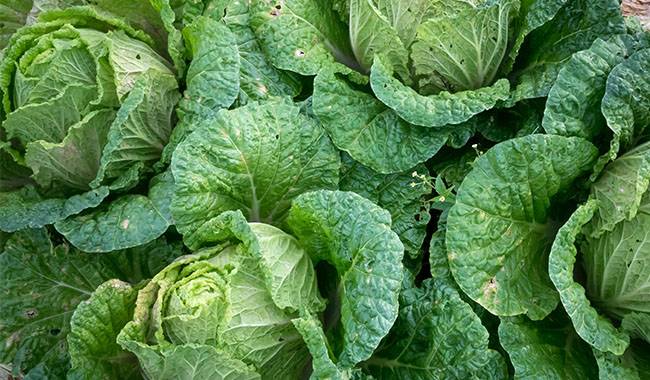
METHODS OF STORING CABBAGES
Storing Cabbages hanging in cages
This storage method involves hanging Cabbages by their heads. It is important to observe the storage conditions by hanging the heads so that they do not touch each other. They will then be ventilated and the chances of decay and other diseases will be minimized.
The advantage of this method is that it takes up as little space as possible: you can put the slats between the highest shelf and the nails hammered into the form of hooks, and hang the heads from them with twine.
However, with this method, you cannot save many Cabbages heads (this is about the disadvantage), and it is difficult to find Cabbages with long shoots on the market. this method is more suitable for people who grow their own Cabbages and can leave long shoots, and for Cabbages with a small volume.
Sometimes Cabbages are even hung up with the root system, simply by pulling the plant out of the soil or digging it out with a pitchfork. When using this storage method, it is important not to use the scales with the cover removed: if they come in contact with each other, they will protect Cabbages from injury and disease.
Storing Cabbages in clay
This method is quite labor-intensive, but in terms of efficiency, it can safely come first. Literally, Cabbages encased in clay (whether Cabbages or Red Cabbages) are not subject to the decay process, do not dry out, and remain fresh and juicy for many months.
In order to build a clay shell, you need to make a clay post. To do this, several parts of clay should be mixed with water, gently added to the clay, and attempted to make a composition similar to sour cream. This mixture is used to coat the Cabbages heads, leaving no gaps, to dry them, and to put them in storage.
The obvious advantage of this method is the longest storage time.
Disadvantages – solid labor costs, it is necessary to get hold of a lot of clay, if Cabbages are also a lot. This method is more suitable for those who have a lot of clay and few Cabbages and is used rather infrequently.
Storage of Cabbages in river sand
Both Cabbages and Red Cabbages can be stored accurately in river sand. There are two storage options in the sand. In the first case, you should cut the cores of Cabbages, place the Cabbage’s heads in a fairly deep wooden box, minimizing the contact between them, and cover them with sand. Ideally, each layer should be covered with sand, but all layers can be covered with sand immediately after laying.
With the second method, initially pour 4-5inch (10-12 cm) thick river sand in a box and screw the Cabbages head in literally, making sure to core down. In this case, the core must be 2-2.4inch (5-6 cm) long (sometimes making it 3inch (8 cm) long).
Putting Cabbages in the basement box
This method is simple and popular, however, if you want to keep Cabbages for as long as possible, you need to have a cellar or basement in addition to the above necessities. The rules are simple – Cabbages or bunches of red Cabbages are usually stacked in a standard “apple” box in several layers of five pieces each (approximately). The optimal length of the stems should be 1.2inch (3cm).
The first layer should be arranged in such a way that the core pieces face upwards, while the upper layer should definitely face downwards. In this way, we create with our own hands a structure thanks to which the air can flow freely and provide ventilation for Cabbages.
Disadvantage – you need a lot of space for Cabbages buckets.
The obvious advantage is that all the Cabbages are in plain sight and can be easily removed if any of them suddenly start to spoil.
Stacking Cabbages for Storage
This method is for those who have a large number of Cabbages and a severe shortage of space to accommodate the harvested crop.
In order to build the most primitive stacks, you need to lay the slats in a pyramid shape, leaving a gap equivalent to 3-4inch (8-10cm) between them. In this case, the core of each bud should be completely cut off so that the Cabbages buds are round and without any protrusions, and the buds should be placed in the constructed stack so that there is a small space between the buds for air circulation.
The advantage here is the simplicity and the ability to observe the way the crop is stored.
Storage of Cabbages on the balcony of the apartment
This method is suitable for those whose only vacant room has a balcony. However, if the balcony of the apartment is not heated, Cabbages will need additional insulation. The simplest variant is the crate, the walls of which are covered with styrofoam. After laying Cabbages, the box should be covered with something warm. An old but unperforated blanket can be used for this purpose.
It becomes a kind of hot box, in which Cabbages lie for quite a long time. If the balcony is heated, it is necessary to open the vents and hang a thermometer, thus regulating the temperature in the room.
Storing Cabbages in the cellar
Next, let’s look at those who have a cellar, there must be shelves and racks. So, on top of them, you can store Cabbages, which is another way of storage.
The best option is to place shelves along the walls, and then you can simply place Cabbages on them, making sure to keep the cores up and leaving at least 0.4inch (1cm) between them.
Use paper to store Cabbages
Paper is best used in wrapping paper and not in newspapers or magazines with toxic paint. Thus, after drying, Cabbages buds should be wrapped only in wrapping paper and placed in large baskets, boxes, and bins.
This paper is ideal when it comes to absorbing excess moisture. You only need to check your “stash” from time to time and if the paper of this or that bud is wet, replace it with a new, dry one.
Store Cabbages in the Refrigerator
If your apartment doesn’t have a balcony, then it’s still a good idea to keep Cabbages buds in the refrigerator, which, by the way, is a good way to store, albeit, a very small batch of Cabbages.
In order for Cabbages to stay in the refrigerator for as long as possible, they should be wrapped in plastic wrap beforehand and placed in the vegetable drawer (modern refrigerators have them).
Cabbages can also be wrapped in paper, but here it is better to use kraft paper or put them in plastic bags, but do not tie them too tightly.
Storing Cabbages in Trenches
This method is ideal for those who have a summer house and have a large harvest but do not take it to the apartment. It remains to dig a trench and bury the crop in it.
In order to dig the trench correctly, it is necessary to choose the highest part of the plot and dig a hole with a depth of 18-22inch (45-55 cm). The width of this hole should be equal to 20inch (50 cm), although everything depends on the volume of the crop you plant, and these dimensions may vary.
The bottom of the trench must be covered with straw, then in two rows with Cabbages heads, another layer of straw, and so on. When you get to the top, you should first use a wooden shield, knocked down like the simplest wooden door, and then cover it with a layer of soil 10inch (25 cm) thick.
This method has one advantage: you can preserve the crop without any prerequisites.
The disadvantages are labor-intensive – not everyone is strong enough to build it all, as well as the inability to monitor the state of the Cabbages. In addition, in winter you will practically not be able to use Cabbages: snow will pile up, the ground will freeze and it will be impossible to get to the buds of Cabbages.
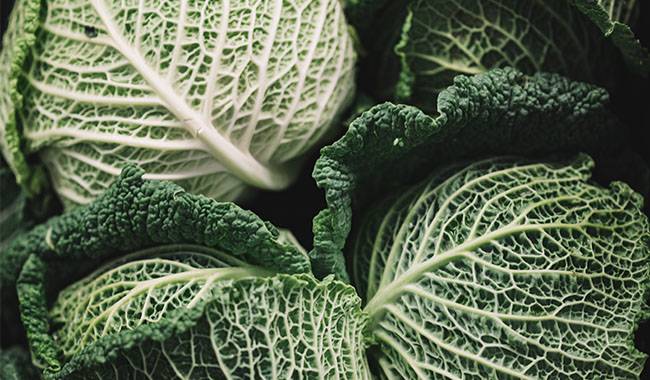
PROTECTING CABBAGES FROM DISEASE DURING STORAGE
So, we have dismantled the most basic and common methods of storing Cabbages, now let’s talk about the troubles that can arise during the storage of Cabbages – about diseases in storage.
It is probably unnecessary to remind that any storage facility, if possible, should be checked at least once a week for compliance with the necessary storage conditions and for the presence of these or other diseases in stored Cabbages.
When you enter the storage room, the first thing you may see is gray rot, and if it makes itself felt, a cluster of mold will appear on the head of the Cabbages, and just a few days later, the leaves will begin to rot. The first to be affected are those Cabbages heads that have had their covering leaves removed, and those that have been damaged by frost or traumatized during harvest.
Of course, you cannot exclude the possibility of perfectly healthy Cabbages suddenly being covered with gray rot, but usually, this disease only occurs on fully developed and correctly placed Cabbages when storage conditions are violated.
Obviously, affected Cabbages heads, no matter how many there are, should be removed from storage immediately and the rest thoroughly inspected. Affected Cabbages do not have to be thrown away; all gray rot lesions can be removed, leaving only healthy tissue and used for food. If you want to put them back in storage, try removing the lesions and sprinkling chalk, there will be a risk, but it is minimal.
The second disease is soft rot, also known as bacterial disease. It usually occurs in damaged or broken heads. To stop soft rot, you just need to move the head to a room with a temperature above 26-28°F (-3 to -2°C), which is usually enough.
CHALK OR LIME – A HELPER FOR STORING CABBAGES
In fact, the use of simple household chalk or slaked lime is also effective, and in this case, Cabbages are not poorly stored. These simple substances protect Cabbage’s heads from various diseases, such as rot.
Cabbages coated with chalk or lime can be placed anywhere – on shelves or slats, hung or placed in pyramids – for extra protection, extended freshness, and flavor.
That’s the subject of our announcement. If you know more ways to store Cabbages, then please describe them in the comments. It doesn’t matter how bad it will be, we all learn from our mistakes.
More related information about growing cabbage plants




